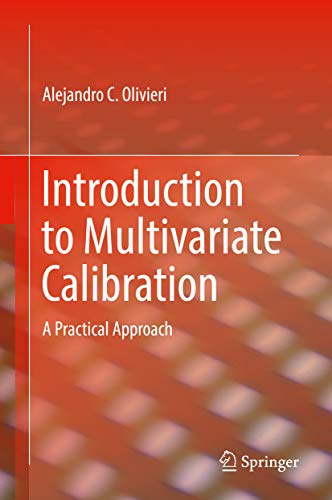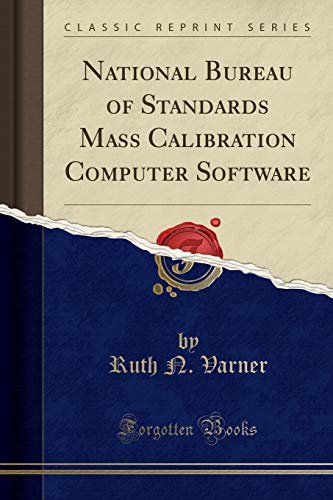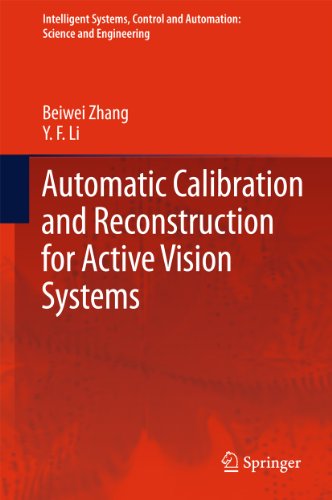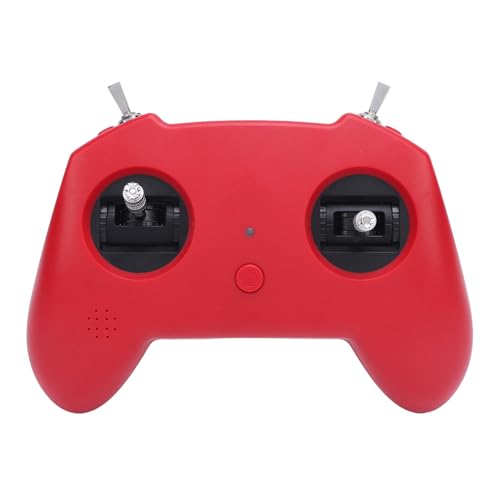Tool calibration software plays a crucial role in ensuring measurement accuracy across various industries. It helps maintain precision and reliability in operations.
Accurate measurements are vital for quality control and efficiency. Tool calibration software offers a streamlined solution for maintaining these standards. By automating the calibration process, this software minimizes errors and saves time, enabling businesses to focus on their core operations.
It is designed to be user-friendly, making it accessible even for non-experts. This software supports various devices, from drones to camera color cards, enhancing their performance. Industries ranging from manufacturing to astrophotography benefit from its capabilities. With tool calibration software, organizations can ensure consistent quality and compliance with industry standards. As technology advances, such software becomes an indispensable asset for modern enterprises.
8 Channels Drone Simulator Controller

The 8 Channels Drone Simulator Controller by ASHATA is ideal for drone enthusiasts, professional pilots, and beginners who want to enhance their flying skills in a safe and controlled environment. If you are looking to practice drone racing or improve your maneuvering with a reliable and compatible remote controller, this item is perfect for you. It is especially suited for users of the Super Link SL8 and those who use mainstream FPV drone software.
Pros:
- Supports 8 channels for versatile control options
- Compatible with popular FPV drone software for seamless integration
- Includes joystick calibration feature for precise control
- Designed by trusted brand ASHATA ensuring quality and durability
- Ergonomic design in an appealing nº 711 color for comfort during long sessions
Cons:
- May require initial setup time for beginners unfamiliar with simulator controllers
- Limited to compatibility with certain software and hardware like the Super Link SL8
The 8 Channels Drone Simulator Controller offers extensive control with its multi-channel capability, allowing users to simulate real drone flying conditions accurately. This enhances muscle memory and reaction times, which are crucial for drone racing and complex maneuvering. Its compatibility with mainstream FPV drone software ensures that it can be integrated into most simulation setups without hassle, providing a smooth user experience.
Additionally, the inclusion of joystick calibration means users can fine-tune their controls to match their flying style, improving precision and reducing the risk of errors. The controller’s ergonomic design and quality build by ASHATA ensure comfort and durability, making it a long-lasting investment for any drone pilot looking to sharpen their skills.
To buy this product, click here.
Introduction To Multivariate Calibration

The Introduction to Multivariate Calibration: A Practical Approach (English Edition) is ideal for professionals, researchers, and students involved in the fields of chemistry, data analysis, and process engineering who seek to deepen their understanding of multivariate calibration techniques. Those looking for a comprehensive and practical guide to apply these methods in real-world scenarios will benefit greatly from this edition.
Pros:
- Comprehensive coverage of multivariate calibration concepts and applications
- Published by the reputable Springer with up-to-date content in the 2nd edition
- Detailed explanations spanning 501 pages for in-depth learning
- Practical approach that bridges theory and real-world practice
- Suitable for both beginners and advanced users in the field
Cons:
- Lengthy content may be overwhelming for casual readers
- Focused primarily on multivariate calibration, limiting scope for broader data analysis topics
- Requires some prior knowledge in statistics or chemistry for best comprehension
This edition, published on July 15, 2024, provides a thorough exploration of multivariate calibration techniques, combining theoretical foundations with practical examples. The book’s extensive content allows users to develop a solid grasp of various calibration models and their applications, making it an essential resource for those aiming to improve their analytical skills and accuracy in experimental data interpretation.
Readers will appreciate the book’s clear structure and detailed explanations, which help demystify complex concepts. By applying the practical approaches outlined in this edition, users can enhance the precision and efficiency of their data analysis, leading to better decision-making and optimized processes in scientific and industrial settings.
To buy this product, click here.
Introduction To Multivariate Calibration

The book Introduction to Multivariate Calibration: A Practical Approach (English Edition) is ideal for professionals, researchers, and students in the fields of chemistry, data science, and analytical instrumentation who seek a comprehensive understanding of multivariate calibration techniques. Those looking to apply practical and effective methods for data analysis and modeling in complex chemical systems will find this resource particularly valuable.
Pros:
- Comprehensive coverage of multivariate calibration methods with practical examples
- Written by Springer, ensuring high-quality academic content
- Detailed explanations suitable for both beginners and advanced users
- Contains 427 pages of in-depth material published in 2018, reflecting recent advancements
Cons:
- May be too technical for casual readers or those without a background in chemistry or data analysis
- Primarily focused on theoretical and practical approaches, less emphasis on software-specific tutorials
This edition provides a thorough introduction to the principles and applications of multivariate calibration, making complex statistical concepts accessible through practical guidance. It covers various calibration techniques that help users improve the accuracy and reliability of chemical data analysis. Readers benefit from learning how to implement these methods to enhance experimental design and interpretation.
With 427 pages, the book offers extensive coverage of topics such as model validation, error analysis, and optimization strategies. Its detailed approach supports users in developing robust calibration models that can be applied across different analytical scenarios. This practical focus ensures that readers gain hands-on experience, making it an indispensable resource for advancing skills in multivariate data processing.
To buy this product, click here.
Fundamentals And Analytical Applications Of Multiway Calibration

The Fundamentals and Analytical Applications of Multiway Calibration: Volume 29 is ideal for researchers, analytical chemists, and graduate students who are looking to deepen their understanding of multiway calibration techniques in chemical analysis. Those involved in data modeling, chemometrics, or seeking comprehensive reference material on analytical calibration methods will find this book particularly beneficial.
Pros:
- Comprehensive coverage of multiway calibration fundamentals and applications.
- Published by reputable Elsevier, ensuring high-quality and reliable content.
- Extensive 618 pages of detailed information and case studies.
- Suitable for both beginners and advanced users due to its clear explanations and depth.
- Compact dimensions make it easy to handle and store (9.0 x 6.0 x 1.75 inches).
Cons:
- Relatively heavy (2.4 pounds), which might be less convenient for carrying around.
- First edition published in 2015, so some content may not reflect the latest advancements.
- Highly technical language may be challenging for casual readers without a background in chemometrics.
This book offers an in-depth exploration of the principles and practical applications of multiway calibration, making it a valuable resource for those working in analytical chemistry. Its detailed explanations help users understand complex calibration models, enhancing their ability to interpret and apply multiway data effectively. The inclusion of real-world examples and analytical applications bridges theory and practice, providing readers with actionable insights.
The structured layout and comprehensive content allow users to progressively build their knowledge, starting from the fundamental concepts to advanced analytical techniques. By mastering the content of this volume, professionals can improve their data analysis accuracy and efficiency, which is crucial for high-quality research and industrial applications. The book’s authoritative nature ensures that readers have a trusted reference for both study and practical implementation.
To buy this product, click here.
Cartão De Correção De Cor De Câmera Pixel Perfect

O Cartão de correção de cor de câmera Pixel Perfect é ideal para fotógrafos e videomakers profissionais ou amadores que buscam precisão máxima na captura das cores. Se você trabalha frequentemente com edição de fotos ou vídeos e precisa garantir a cor verdadeira e o equilíbrio de branco perfeito, este conjunto é para você.
Pros:
- Inclui duas tabelas de referência no tamanho 4×6 polegadas para fácil manuseio.
- Ajuda a calibrar a temperatura de cor e o equilíbrio de branco com precisão.
- Compacto e leve, facilitando o transporte durante sessões de fotos e gravações.
- Fabricado pela confiável marca Pixel Perfect, garantindo qualidade e durabilidade.
- Ideal para uso em foto e vídeo, melhorando a consistência das cores nas produções.
Cons:
- Requer algum conhecimento prévio para aproveitar ao máximo suas funcionalidades.
- Não substitui equipamentos profissionais de calibração mais avançados.
- Somente em tamanho 4×6, o que pode não ser ideal para todos os tipos de câmeras ou situações.
Este conjunto de cartões de correção de cor da Pixel Perfect apresenta uma ferramenta cinza precisa para medição, que facilita a referência para o ajuste correto da exposição e do equilíbrio de branco. Com dimensões de 4×6 polegadas, é prático para uso em campo e se encaixa bem em diferentes ambientes de trabalho, desde estúdios até locações externas.
Além de ajustar a temperatura de cor, o cartão serve como uma tabela de calibração que ajuda a garantir que as cores capturadas pela câmera sejam fiéis à realidade, economizando tempo na pós-produção. Seu peso leve e tamanho compacto tornam-no uma ferramenta indispensável para profissionais que desejam melhorar a qualidade visual de suas imagens e vídeos, mantendo a consistência e o realismo das cores.
To buy this product, click here.
National Bureau Of Standards Mass Calibration Computer Software

The National Bureau of Standards Mass Calibration Computer Software (Classic Reprint) is ideal for professionals and enthusiasts in the fields of metrology, engineering, and quality control who require precise mass calibration data and tools. This software is perfect for users looking for reliable and historically significant calibration resources to enhance their measurement accuracy and standardization processes.
Pros:
- Provides authoritative mass calibration data from the National Bureau of Standards
- Compact and lightweight with dimensions of 9.01573 x 0.3937 x 5.98424 inches and weight of 0.54 pounds
- Contains comprehensive information spread over 178 pages for in-depth reference
- Published by Forgotten Books, ensuring access to valuable classic reprint materials
- Useful for enhancing precision in measurement and calibration processes
Cons:
- Classic reprint format may lack modern software interface and usability features
- Limited to the data and methods available up to its publication date in 2018
- May require foundational knowledge in calibration and metrology to fully utilize
This classic reprint software by Forgotten Books offers a historically rich collection of mass calibration standards developed by the National Bureau of Standards. Its detailed specifications and comprehensive content make it an essential tool for users dedicated to maintaining high accuracy in weight measurements. The compact dimensions and light weight make it easy to handle and store, while the extensive page count ensures thorough coverage of calibration procedures.
Users benefit from the reliability and authoritative nature of the data, which can significantly improve measurement consistency and compliance with industry standards. Despite being a classic reprint, the software remains a valuable resource for those seeking to understand foundational calibration techniques and apply them effectively in their work environments. This product bridges the gap between historical standards and modern calibration needs, making it an indispensable asset for precision-focused professionals.
To buy this product, click here.
Calibration And Validation Of The Cocomo Ii Cost/schedule Estimating Model

The Calibration and Validation of the Cocomo II.1997.0 Cost/Schedule Estimating Model is ideal for professionals and researchers in the aerospace and defense sectors who require precise cost and schedule estimations. This item is particularly suited for project managers, systems engineers, and analysts working with space and missile systems who need reliable and validated models to support budgeting and timeline forecasting.
Pros:
- Provides a thoroughly calibrated and validated model tailored to the Space and Missile Systems Center Database.
- Compact dimensions (Height: 9.21 inches, Width: 0.38 inches, Length: 6.14 inches) make it easy to handle and store.
- Comprehensive content with 140 pages of detailed analysis and data.
- Published by the reputable Hutson Street Press in 2025, ensuring up-to-date methodologies.
- Lightweight design (0.83 pounds) for easy portability.
Cons:
- Highly specialized content may not be suitable for general audiences or those outside aerospace and defense sectors.
- The technical nature requires a background in cost estimation or systems engineering to fully utilize.
- Limited physical size may restrict the inclusion of extensive supplementary materials or examples.
This publication offers a robust and validated approach to applying the Cocomo II.1997.0 Cost/Schedule Estimating Model specifically adapted for the unique demands of the Space and Missile Systems Center Database. Users benefit from a model that has been meticulously calibrated to reflect real-world project data, enhancing the accuracy of cost and schedule predictions. This precision aids in making informed decisions that can significantly impact project success.
The detailed analysis contained within the 140 pages provides in-depth insights into the calibration process, validation techniques, and practical applications. By integrating this resource into their workflow, professionals can reduce risks associated with budget overruns and schedule delays. The publication’s manageable size and weight also make it convenient for professionals to reference during meetings or on-site evaluations, ensuring critical information is always accessible.
To buy this product, click here.
Astrophotography For Seniors With Pixinsight: A Step-by-step Handbook For Beautiful Night-sky Image Processing And Calibration

The book Astrophotography for Seniors with PixInsight is ideal for older adults who have a passion for night-sky photography and want to learn how to process and calibrate their images with professional-level software. It is perfect for seniors who appreciate a step-by-step guide tailored to their pace and are eager to capture stunning celestial images using PixInsight. Whether you are a beginner or have some experience, this handbook provides clear instructions to enhance your astrophotography skills.
Pros:
- Detailed, easy-to-follow step-by-step instructions tailored for seniors
- Focuses on PixInsight software for advanced image processing
- Includes practical tips on image calibration and noise reduction
- Comprehensive coverage within 212 pages for in-depth learning
- Published recently in 2025, ensuring up-to-date techniques
Cons:
- Specifically focused on PixInsight, which may not appeal to users of other software
- May require basic familiarity with astrophotography concepts before starting
- The technical nature might be challenging for absolute beginners without prior experience
This handbook dives deeply into the capabilities of PixInsight, offering detailed guidance on how to process and calibrate astrophotography images to bring out their true beauty. Readers will learn how to correct common issues such as noise, vignetting, and color imbalance, which are critical for producing professional-quality night-sky photos. The step-by-step approach ensures that seniors can follow along without feeling overwhelmed, making complex techniques accessible.
With a publication date in 2025 and spanning 212 pages, the book combines modern methods with thorough explanations. It empowers users to enhance their images through practical workflows, helping them create stunning astrophotographs that capture the wonder of the cosmos. This handbook is a valuable resource for seniors who want to elevate their astrophotography hobby using one of the most powerful software tools available.
To buy this product, click here.
Calibration Of The Softcost-r Software Cost Model To The Space And Missile Systems Center Software Database

The Calibration of the Softcost-R Software Cost Model to the Space and Missile Systems Center Software Database is ideal for software project managers, cost analysts, and systems engineers working within aerospace, defense, or government sectors. Those involved in budgeting, estimating, or improving software development cost models will find this resource particularly valuable for enhancing the accuracy of their cost predictions based on historical data.
Pros:
- Provides a detailed calibration methodology tailored to the Space and Missile Systems Center software projects.
- Authored and published by Biblioscholar, ensuring credible and specialized content.
- Compact and focused with 98 pages, making it a concise reference.
- Physical dimensions and weight make it easy to handle and store (Height: 9.69″, Width: 0.2″, Length: 7.44″, Weight: 0.42 lbs).
- Publication date of 2012 ensures the model is based on established data sets.
Cons:
- May be too specialized for those outside of aerospace or defense software project management.
- Published in 2012, so some data or methodologies may be outdated for rapidly evolving software development environments.
- Limited to calibration for a specific database, which may reduce applicability to other industries or contexts.
This publication delivers an in-depth look at calibrating the Softcost-R Software Cost Model specifically for the Space and Missile Systems Center software database. By focusing on this niche, the book offers tailored insights that enhance cost estimation accuracy for highly specialized projects. The calibration process described helps users refine their predictive capabilities, potentially reducing budget overruns and improving project planning.
Readers will benefit from the detailed analysis and practical examples presented, which demonstrate how to leverage historical data effectively. The compact format makes it accessible for quick reference, while the authoritative source ensures reliability. Although some content may require updating to align with current software development trends, the foundational principles remain highly relevant for professionals aiming to optimize their cost modeling efforts within aerospace and defense sectors.
To buy this product, click here.
Automatic Calibration And Reconstruction For Active Vision Systems

The book Automatic Calibration and Reconstruction for Active Vision Systems is ideal for researchers, engineers, and graduate students specializing in the fields of computer vision, robotics, and automation. Those looking to deepen their understanding of advanced techniques in active vision systems and their practical applications will find this resource invaluable. It is particularly suited for professionals aiming to enhance system accuracy through sophisticated calibration and 3D reconstruction methods.
Pros:
- Comprehensive coverage of automatic calibration techniques tailored for active vision systems.
- Detailed explanations supported by mathematical models and real-world examples.
- Published by Springer, ensuring authoritative and well-reviewed content.
- Includes a broad range of topics relevant to intelligent systems and automation engineering.
- 288 pages of in-depth analysis and practical insights from 2012 edition.
Cons:
- Some readers might find the content technically dense without a strong background in control systems or computer vision.
- Publication date (2012) means it may not cover the latest advances in active vision technology.
- Primarily targeted at advanced users, which could limit accessibility for beginners.
This book offers a thorough exploration of automatic calibration methods essential for improving the precision and reliability of active vision systems. By focusing on the integration of control theory and computer vision, the text bridges theoretical frameworks with practical implementation strategies. Readers benefit from comprehensive coverage of algorithms designed to automate the calibration process, reducing the need for manual intervention and minimizing errors in 3D reconstruction tasks.
Additionally, the book highlights the significance of combining intelligent systems with automation to optimize vision-based applications. The detailed treatment of reconstruction techniques allows users to understand how to extract accurate spatial information from visual data, which is crucial for robotics and automation scenarios. Overall, this edition provides valuable insights for anyone seeking to advance their expertise in active vision, with a strong foundation in both science and engineering principles.
To buy this product, click here.
Frequently Asked Questions
What Is Tool Calibration Software Used For?
Tool calibration software ensures measurement tools provide accurate, consistent results. It automates calibration processes, reducing errors and saving time. This software supports various industries by maintaining compliance with quality standards and improving overall product reliability.
How Does Drone Simulator Controller Calibration Work?
Drone simulator controller calibration aligns joystick inputs with software responses. It ensures precise control during simulation, mimicking real drone behavior. Calibration adjusts sensitivity and dead zones, enhancing training effectiveness for FPV drone pilots and racing enthusiasts.
Why Is Multivariate Calibration Important In Analytics?
Multivariate calibration analyzes multiple variables simultaneously to improve prediction accuracy. It helps in complex data modeling, reducing measurement errors. This approach is essential in fields like chemistry, manufacturing, and quality control for reliable analytical results.
How Do Color Correction Cards Aid Camera Calibration?
Color correction cards provide standard color references for cameras. They help adjust white balance and exposure settings accurately. Using these cards ensures consistent color reproduction across photos and videos, enhancing image quality in professional and hobbyist photography.
What Benefits Does Automatic Calibration Offer For Vision Systems?
Automatic calibration streamlines setup by self-adjusting sensors and cameras. It improves accuracy and reduces manual intervention. This technology enhances active vision systems’ performance in robotics, surveillance, and industrial automation by providing precise spatial measurements.
How Is Software Cost Model Calibration Performed?
Software cost model calibration adjusts estimation parameters to match real project data. It enhances prediction accuracy for budgets and schedules. Calibration uses historical data to fine-tune models like Cocomo II, improving planning and resource allocation in software development projects.
Conclusion
Choosing the right tool calibration software helps keep your devices accurate and reliable. It ensures measurements stay consistent over time. This software supports different tools, from drone controllers to camera color cards. It also aids in complex tasks like cost model calibration and image correction.
Using proper calibration software reduces errors and saves time in the long run. It makes maintenance easier and improves overall performance. Whether you work with drones, cameras, or scientific equipment, calibration software is key. It helps you trust your tools and get better results.
Simple to use but powerful in function, this software fits many needs. Accurate tools lead to better work and fewer problems. Taking care of your instruments with the right software is a smart choice. It keeps your workflow smooth and your data dependable.


